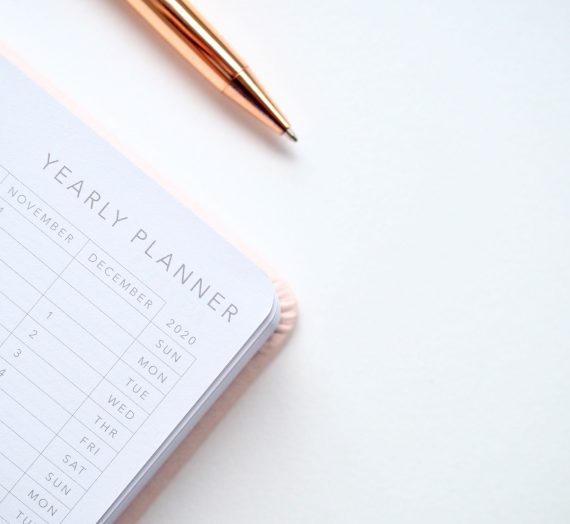With the COVID-19 pandemic still very much a part of our day-to-day lives and the start of school right around the corner, there has never been a better time to equip your music studio to thrive in a virtual world. Though musical life as we once knew it has seemingly halted, creative musicians worldwide are doing what they do best – thinking outside the box!
Earlier this year, my students and I laughed at the possibility of fully “going virtual” with lessons. We knew there was some small chance of it, but it seemed so far-fetched, since learning music has always been a very “in person” experience.
I only began toying with the idea of teaching online lessons last summer, as an exciting new way to expand my studio and allow for some much needed flexibility in my teaching schedule. Little did I know, the initial research and success of those first online lessons would give me the necessary confidence going into an abrupt mid-semester shift to a completely virtual platform (March 2020).
To my surprise, it went more smoothly than I could have imagined. My students were wonderful- and if I’m honest, I think everyone kind of loved it! You can’t really beat the convenience of learning from home. There’s no driving, parking, rushing out the door – and yet you still have that important face to face time with your teacher.
So, how is it done? What is needed to run a digital teaching studio? And what details must be considered?
Let’s take a look at some key components for transitioning your studio.

All the techy things…
First, you and your students must have access to a computer, tablet, or smartphone. Keep in mind that a device with a large screen is ideal, since there is often a need to closely observe a student’s embouchure or fingering pattern or to demonstrate a technique, etc. This makes a computer (laptop or desktop) your best option. Smartphones can be a little tricky. Students often have issues positioning the phone in an optimal spot, not to mention the distraction of texts and notifications popping up. However, phones are an option and work well as a backup.
Next, you’ll need a platform to teach live lessons. Some options to consider are Zoom, Skype, and FaceTime. Personally, I’ve had the most success with Zoom. It allows me to schedule lessons ahead of time and create password-protected sessions for security purposes. Zoom works well for group lessons, too. Skype and FaceTime have been great and reliable backup options, that I have used frequently. FaceTime is particularly easy for students and parents, since most are familiar with it already from their everyday lives.
If you would like specific instructions regarding setting up ideal audio settings for music lessons on Zoom, please click here.
Additionally, it is helpful to have an external microphone to enhance the sound quality of your instrument and voice. Here is what I use and I recommend.
- Blue Yeti Nano – Blue Yeti is pretty much the gold standard. Very reliable. Great quality.
Finally, it is a huge advantage to have all of your teaching materials scanned for quick and easy sharing. You will save a tremendous amount of time by having music, scores, and resources scanned and at your fingertips.
Recently, I transitioned to an iPad tablet and have scanned much of my music. Though I still have a way to go, it is FANTASTIC having so many of those resources easily accessible. I can share anything with a student instantly. It is so convenient to pull up a piece that a student is working on and be able to review my own notes or breath marks to help share musical wisdom.
It is infinitely more efficient then rummaging through technique books and stacks of sheet music, which is something I did for years.

For reading, practicing, or teaching music, I use the forScore app, which also organizes and stores my music. With this app and my new handy Apple Pencil, I can also annotate my music. It is so exciting! I spent too many years hauling method books and music in my flute bag between music schools and my home studio. To backup all of my scanned scores, I simply use Google Drive. Of course, you can also store scanned materials on the iCloud.
Making the transition…
Communication with students and parents is key in making a successful transition of your studio. It is important to update studio policies and clearly communicate expectations to both students and parents.
Students may feel more relaxed coming to you from the comfort of their own home, but it is necessary to emphasize the need to continue to warm up sufficiently, properly prepare for their lessons, limit distractions, and stay fully engaged throughout lessons.
It is also helpful to decide on a way to communicate outside of lessons, so that students will know where to expect any extra communication regarding their lessons or progress. Teachers have different preferences in regards to using email, text, or phone calls, so it is worthwhile to think this through and clearly communicate what option is best.
It is also worth noting that using Google Classroom can be beneficial, as it offers a way to communicate with multiple students at once. It is a place to post important notices for your studio, as well as helpful recordings, accompaniment tracks, and other resources. Students can log-in and refer to your studio’s Google Classroom page at anytime.
Embracing the bright side…
I do miss seeing students face to face each week, in person. But, it is important to embrace the bright side of this change. The joy and energy you bring to your studio, even online, will set the tone ; ) for the success of the shift to virtual learning.
There will be bumps along the road, but on the whole, there are many benefits. There is tremendous scheduling flexibility for both teacher and student. Plus, teaching virtually from home is just fun!
I love being able to enjoy my preserve views as I teach – or give my kids a big hug or grab a cup of coffee easily between students. There are also more and more creative resources available on the internet everyday to help make sharing music remotely more possible and productive.
Additionally, there is unlimited growth potential for your studio! It is an incredible opportunity to connect with new students from anywhere in the world that might be a good fit for you, as a teacher.
Resources for students…
Here are a couple of resources that might be helpful as you transition your studio. This list will be updated continually, as resources become available, so be sure to check back.
JamKazaam – play music live with others from different locations
SmartMusic – a music learning software for students and teachers
Chrome Music Lab – makes music accessible with hands-on experiments
Garage Band – instantly record a performance
Classics for Kids – interactive educational music website for kids to explore
Best of luck as you learn to teach music virtually. It is definitely a process, so if you find you have questions, do not hesitate to reach out with questions!
With joy,

How about you? If you find yourself in the midst of going digital with your studio, be sure to comment below to share your experience! What helpful resources have you found? Please share below!



